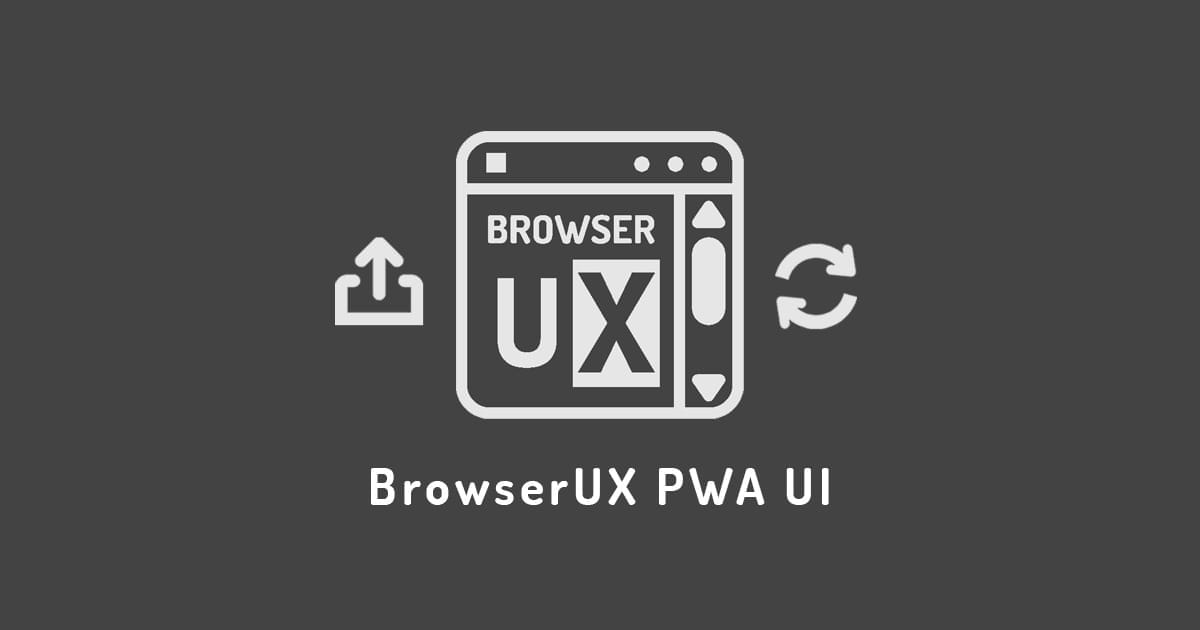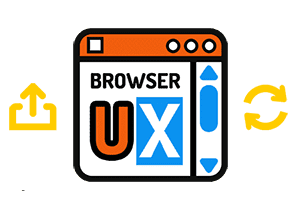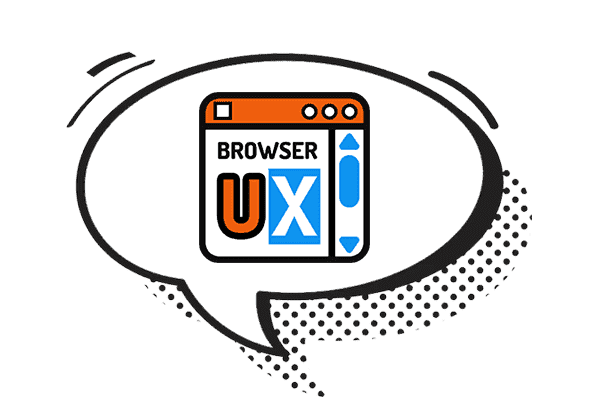About BrowserUX PWA UI

BrowserUX PWA UI is a modern Web Component designed to enhance the user experience around the installation and update flows of Progressive Web Apps. Lightweight, multilingual, and fully customizable, it bridges the browser’s native UX gaps by offering a clear, consistent, and accessible interface to guide users through these key steps.
- BrowserUX PWA UI source code on GitHub
- BrowserUX PWA UI project website
- BrowserUX PWA UI documentation
Designed as a standalone and universal building block, browserux-pwa-ui does more than show a banner,
it delivers real UX, with integrated logic, styling flexibility, and modern best practices in mind.
I. Why BrowserUX PWA UI?
Installing a PWA relies on low-visibility events like beforeinstallprompt, and updates often happen silently
via the Service Worker. The result? A confusing experience for end users, who don’t know when or how to install or update the app.
BrowserUX PWA UI was built to solve this core issue: to provide a Web Component that unifies, structures, and improves these critical moments, across all modern browsers, with no dependencies and a clear user experience.
II. Goals
- Provide a visual interface for installing and updating a PWA.
- Automatically detect system events (
beforeinstallprompt,registration.waiting). - Make installation accessible via a clear button.
- Notify users when an update is available.
- Easily integrate into any type of project (plain HTML, React, Vue, Angular).
- Support multiple languages (auto-detection or manual override).
- Fully customize appearance (CSS variables, icon slots, text attributes).
III. Key Features
1. Native Install Interface
As soon as the browser triggers beforeinstallprompt, the component displays a banner with an Install button.
Once the app is installed, a confirmation message appears.
<browserux-pwa-ui></browserux-pwa-ui>No logic required: the component detects, displays, and manages everything automatically.
2. Update Handling via Service Worker
When a new service worker is waiting to activate, browserux-pwa-ui shows an Update banner.
On click:
- It triggers
skipWaiting()on the worker, - and reloads the page with
location.reload().
All of this is handled within the UI, no manual logic needed.
3. Built-in Multilingual Support
The component determines the language using:
- 1. The
langattribute on the component, - 2. The HTML document’s language,
- 3. Or defaults to
en.
Texts can be easily customized using HTML attributes:
<browserux-pwa-ui
lang="fr"
text-install-title="Ajoutez cette application"
text-update-button="Mettre à jour maintenant"
></browserux-pwa-ui>Supported languages: 🇬🇧 en, 🇫🇷 fr, 🇪🇸 es, 🇩🇪 de, 🇯🇵 ja, 🇷🇺 ru, 🇵🇹 pt, 🇮🇹 it, 🇳🇱 nl
4. Visual Customization
The appearance can be customized using:
- Slots to change icons (
close-icon-update,loader-icon, etc.) - CSS variables for colors, transparency, and background:
<browserux-pwa-ui
style="
--bux-pwa-color-primary: #007bff;
--bux-pwa-color-primary-opacity: rgba(0,123,255,0.8);
"
></browserux-pwa-ui>5. Universal Integration
The component works everywhere:
Plain HTML:
<script type="module" src="https://unpkg.com/browserux-pwa-ui/dist/browserux-pwa-ui.min.js"></script>React:
useEffect(() => { import('browserux-pwa-ui') }, []);Vue 3:
import 'browserux-pwa-ui';Angular:
Add CUSTOM_ELEMENTS_SCHEMA to your AppModule.
IV. A Clean and Modular Architecture
The source code of browserux-pwa-ui is structured into clear, focused modules:
installPrompt.ts→ handles thebeforeinstallprompteventupdatePrompt.ts→ listens for Service Worker updates and triggers the UIstyle.ts→ encapsulates styling via Shadow DOM (or global if needed)BrowserUXPWAUI.ts→ contains the main component logic (lifecycle, rendering, language, slots, etc.)
Each part is well-documented, typed (TypeScript), and designed to be extensible. The component is published in both ESM and UMD formats for maximum compatibility.
V. Thoughtful UX for Everyone
BrowserUX PWA UI follows key principles of good user interface design:
- Clear, translatable text.
- Immediate visual feedback.
- Predictable behavior.
- Lightweight and dependency-free.
It’s ideal for any PWA that aims to improve adoption, enhance user experience, and offer seamless update handling.
VI. In Conclusion
If you're building a Progressive Web App, BrowserUX PWA UI is an essential tool to improve adoption and user-side maintenance. Modern, lightweight, and universally compatible, it integrates in seconds and saves you hours of custom logic.
Try it, use it, contribute: browserux-pwa-ui on GitHub

BrowserUX PWA UI is a lightweight, accessible, and customizable Web Component designed to enhance the install and update experience of Progressive Web Apps across all types of projects: BrowserUX PWA UI
About
This blog was designed as a natural extension of the BrowserUX ecosystem projects.
Its goal is to provide complementary resources, focused tips, and detailed explanations around the technical choices, best practices, and accessibility principles that structure these tools.
Each article or tip sheds light on a specific aspect of modern front-end (CSS, accessibility, UX, performance…), with a clear intention: to explain the “why” behind each rule to encourage more thoughtful and sustainable integration in your projects.

